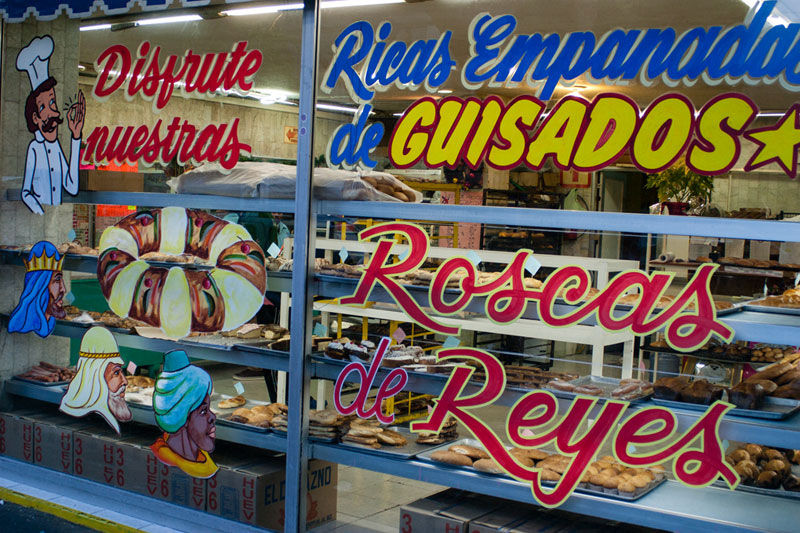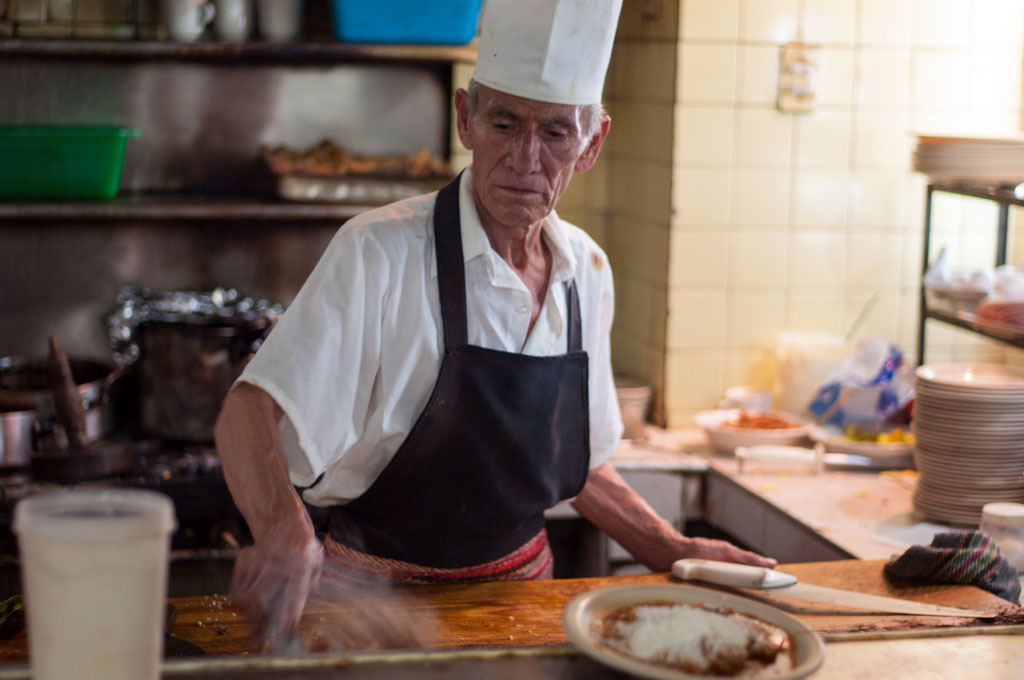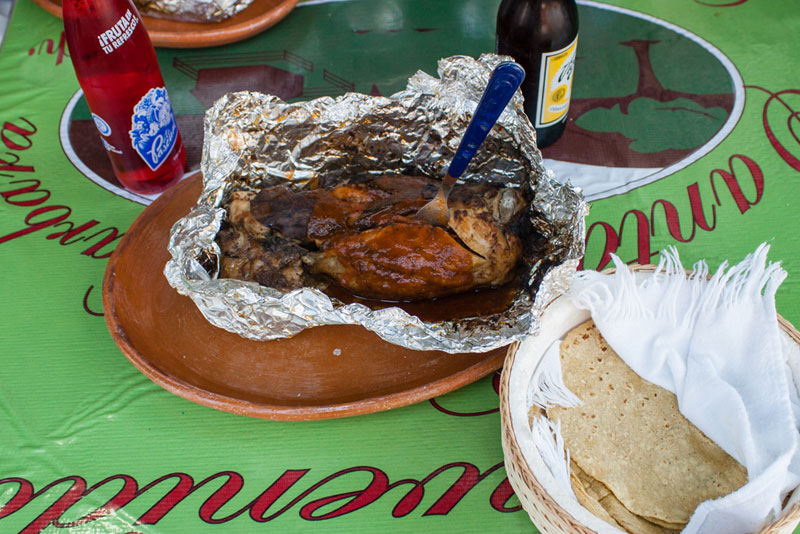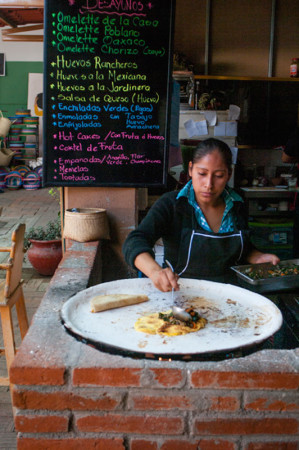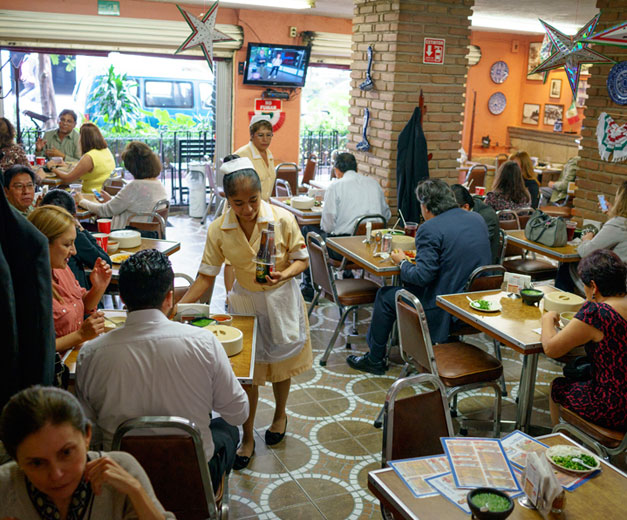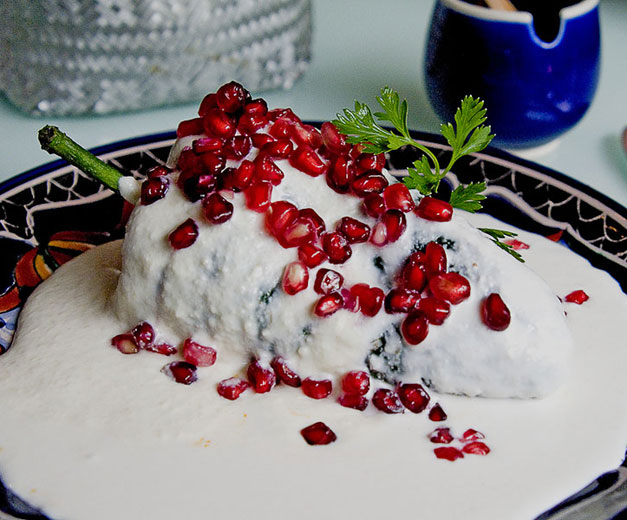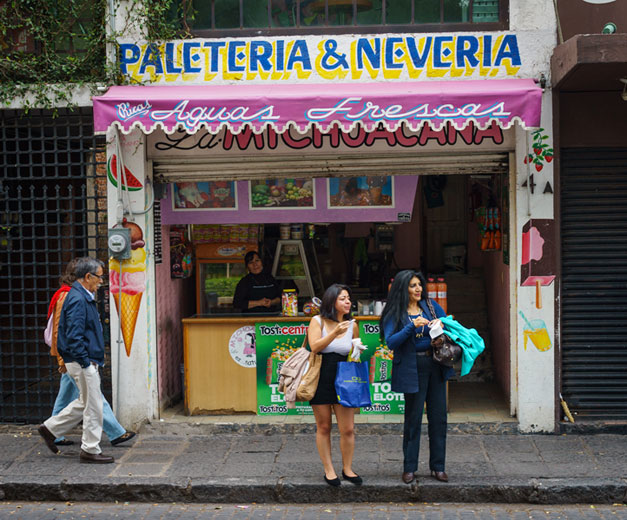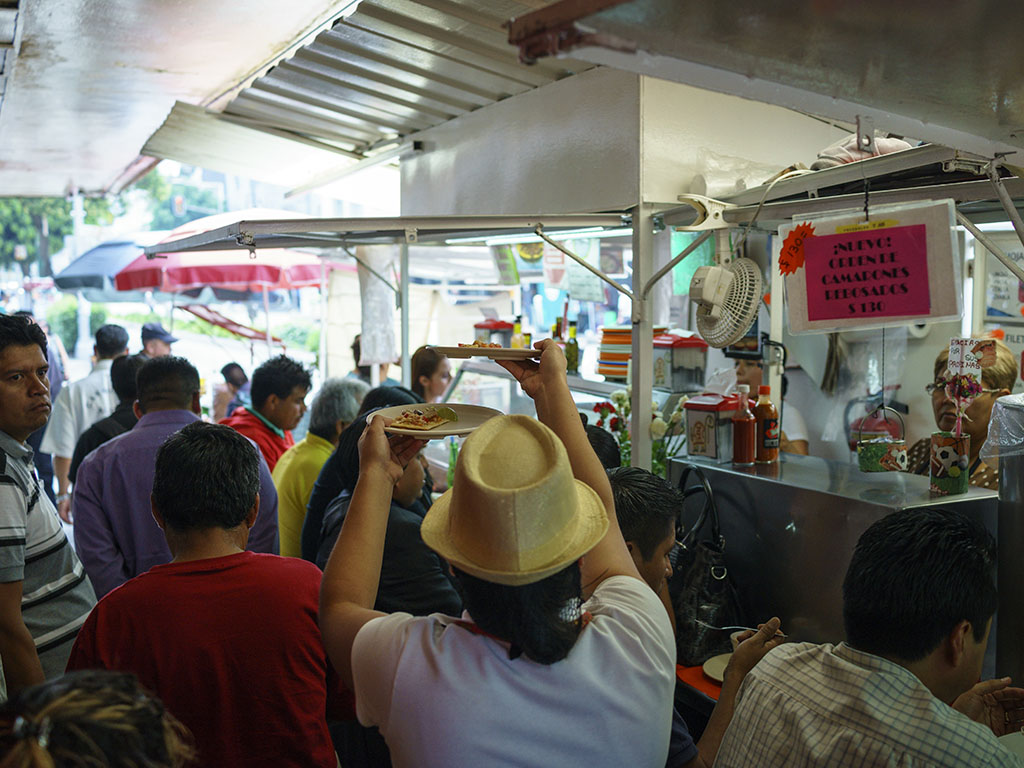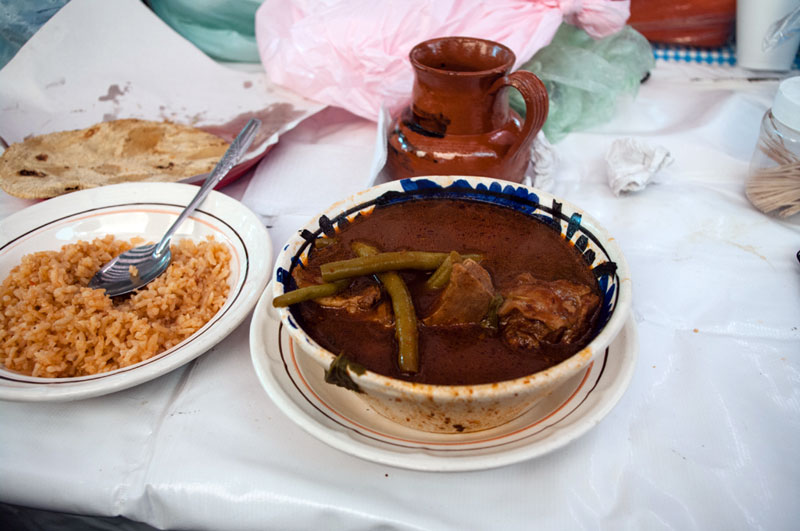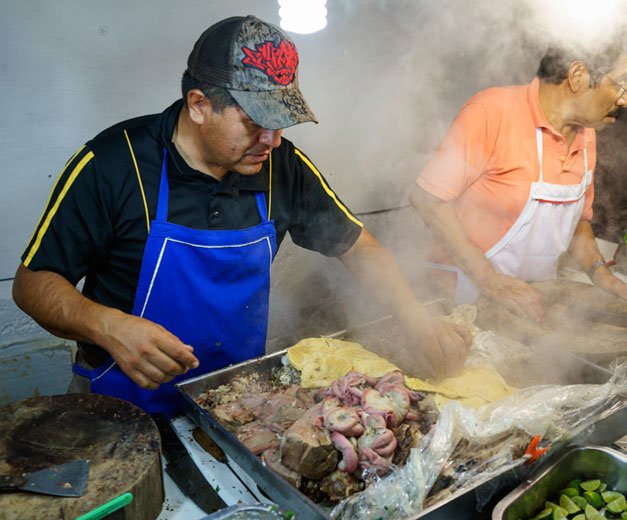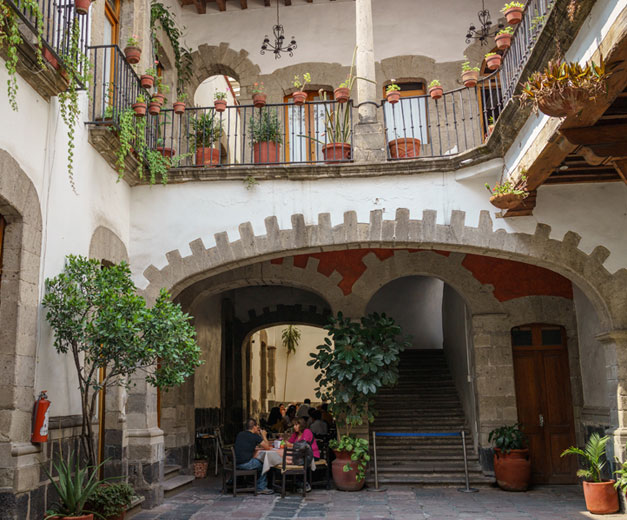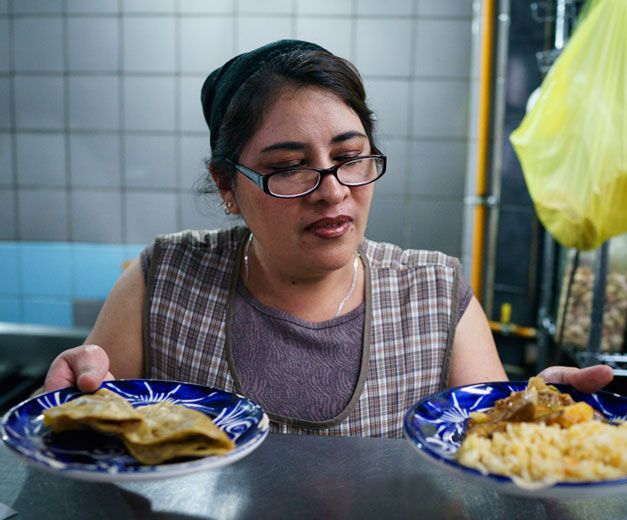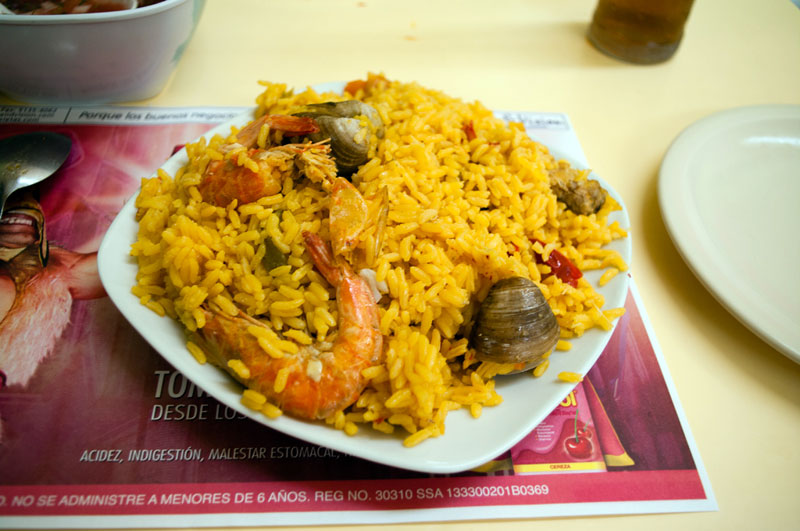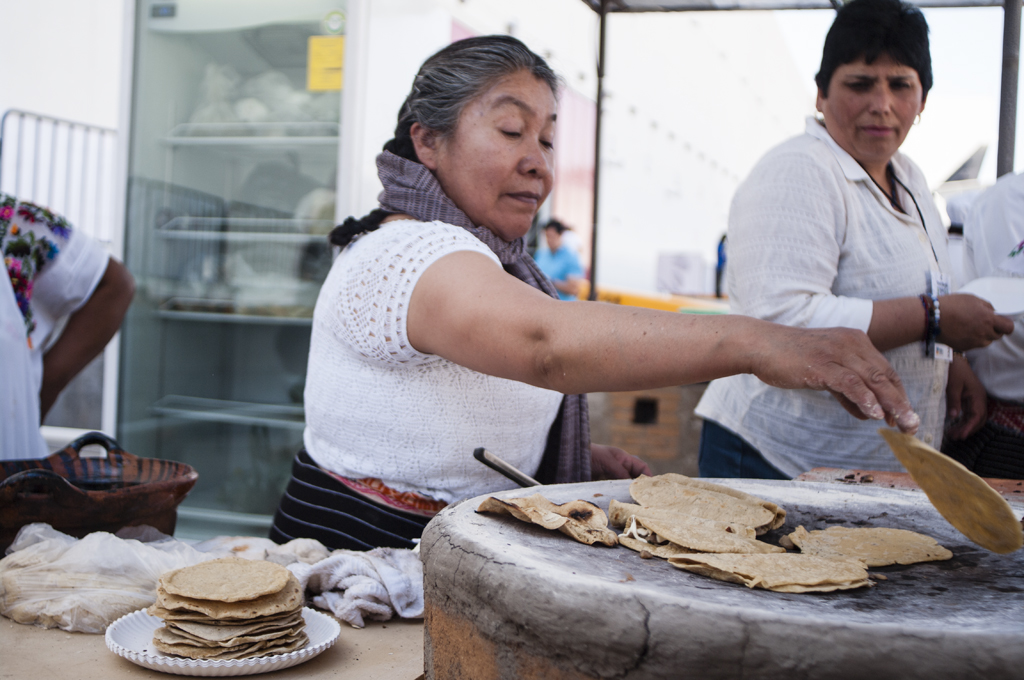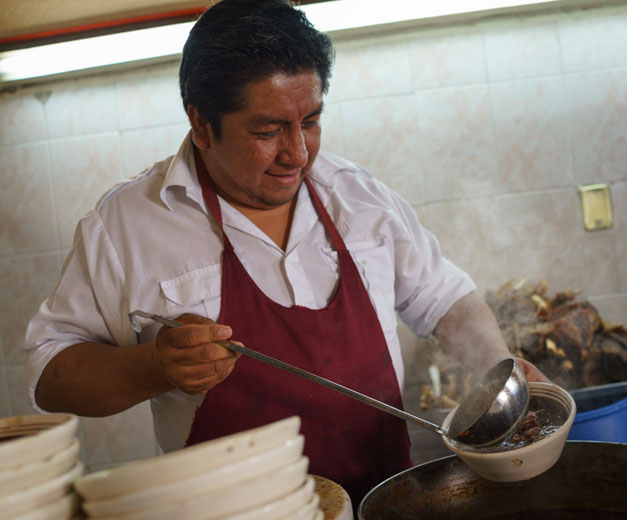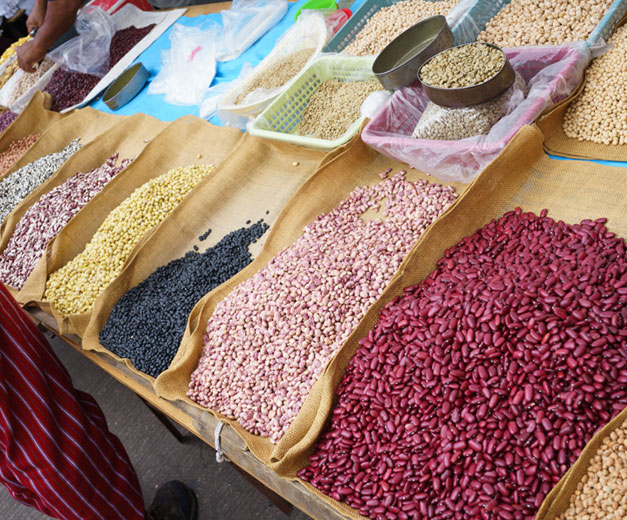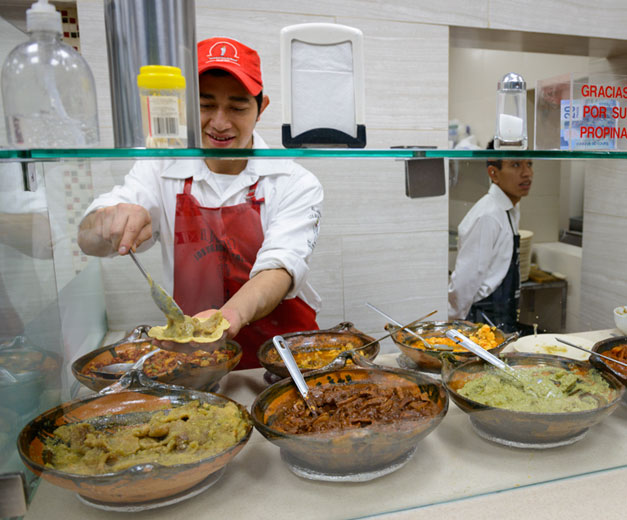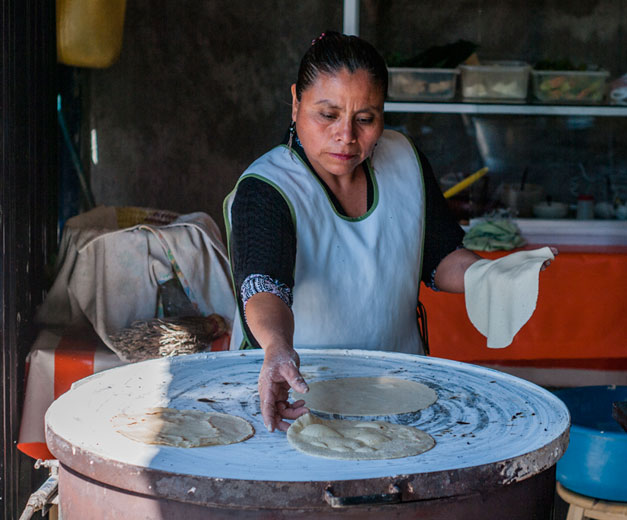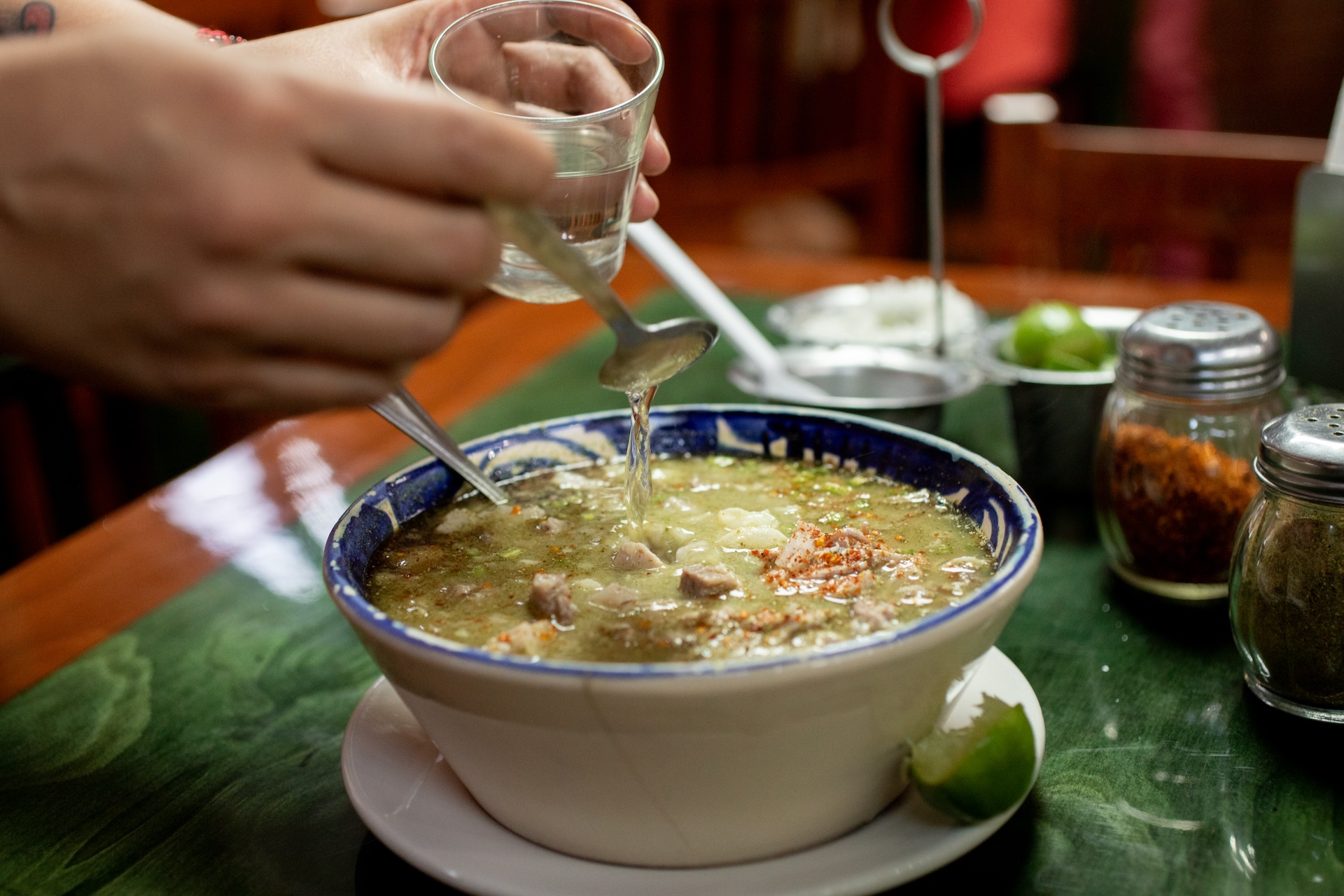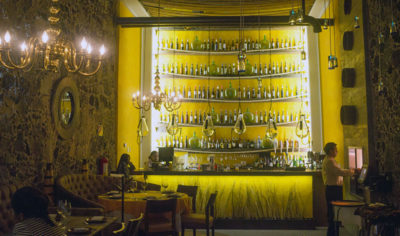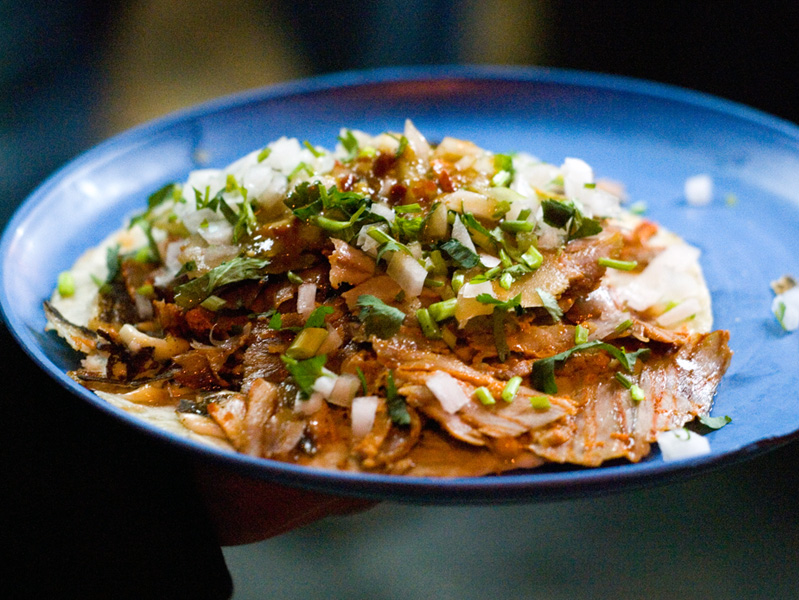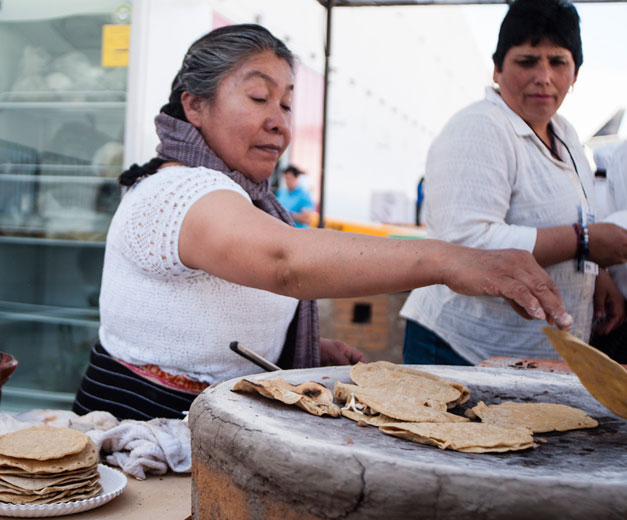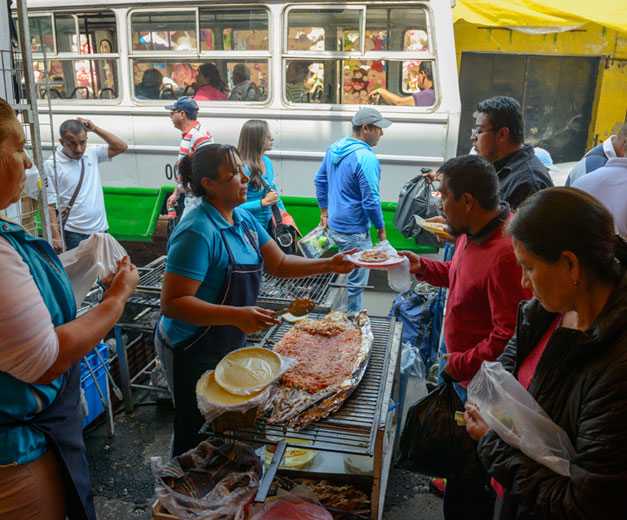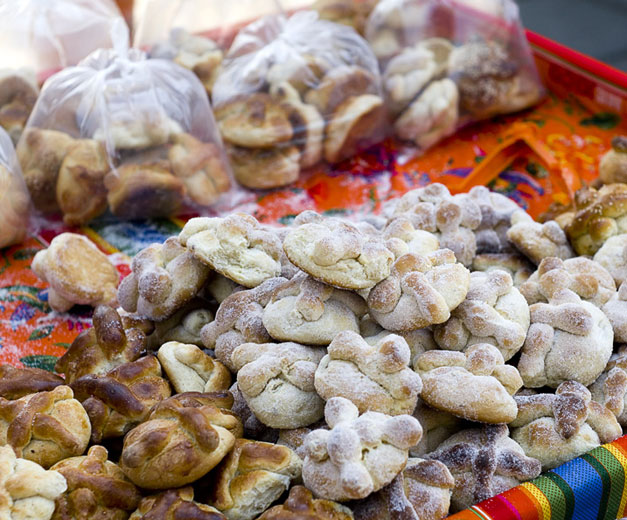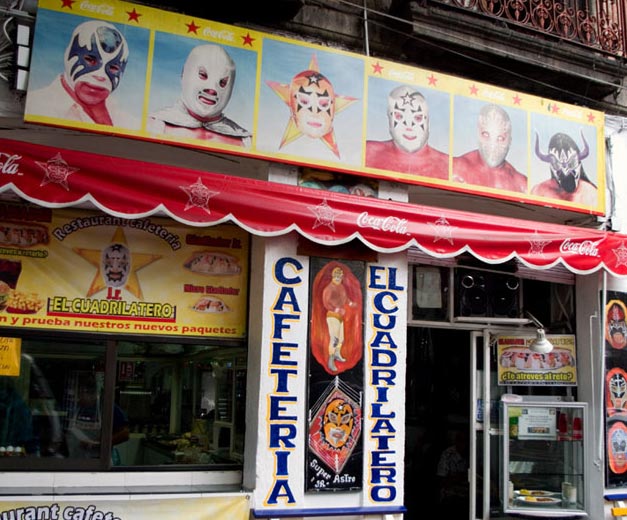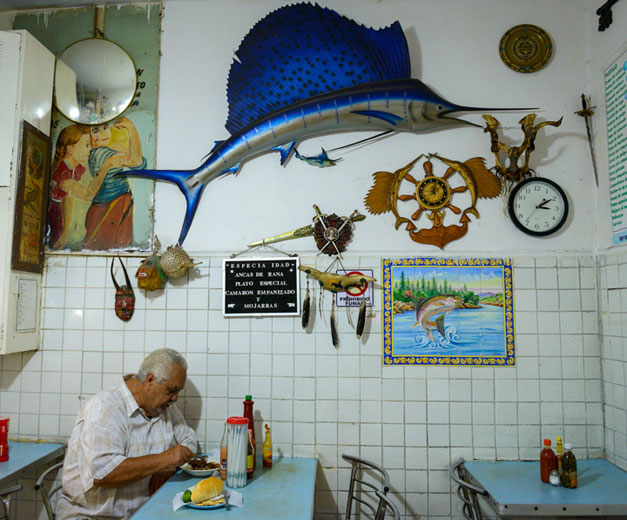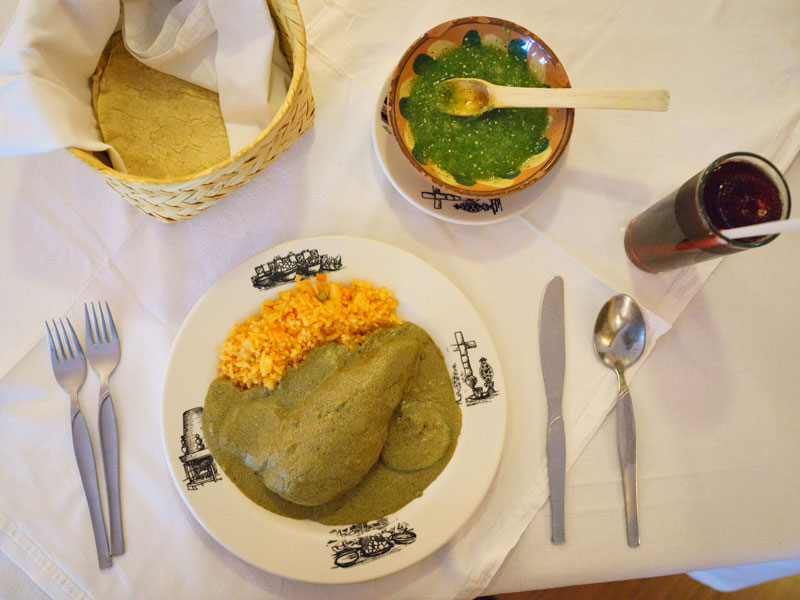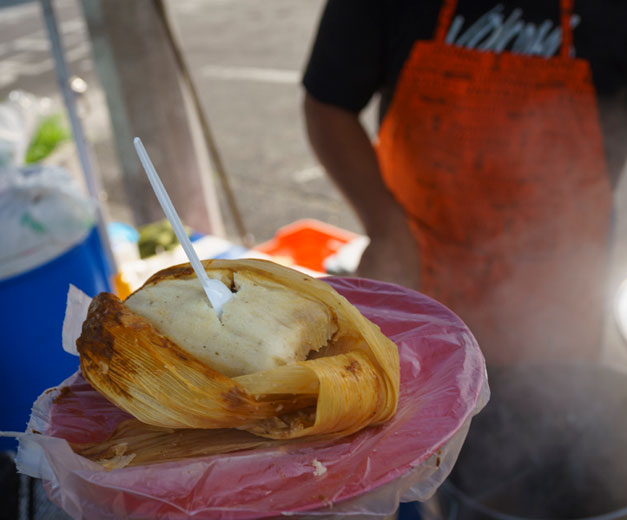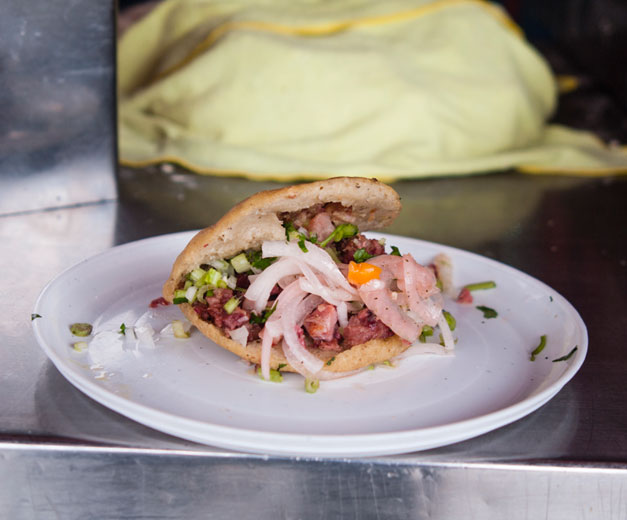We can't find the internet
Attempting to reconnect
Something went wrong!
Hang in there while we get back on track
Search results for "Ben Herrera"
Mexico City
Aguamiel: Dreams of Oaxaca
Deservedly famous for its rich food traditions, the state of Oaxaca is one of our favorite culinary destinations in Mexico. But with Oaxaca City lying nearly 300 miles southeast of Mexico City, we’re always on the lookout for places to satisfy our appetite for Oaxacan cuisine in the D.F. Specializing in tlayudas, one of Oaxaca’s most typical foods, the recently opened Aguamiel is a very welcome addition to the local dining scene.
Read moreMexico City
CB on the Road: Striking Culinary Gold in Zacatecas
Although, thanks to its once flourishing silver and gold mines, the north-central Mexican state of Zacatecas was an economic powerhouse during the colonial period and the early years of the Mexican republic, its cuisine is not as well known in Mexico City as that of states such as Oaxaca and Michoacán. But when we headed this past New Year’s to the state’s eponymous capital city, we were blown away by its food, as well as its history and beautiful colonial architecture. Zacatecas played a significant role in Mexico’s economy during the colonial period: When the Spanish conquistadors learned about the region’s rich mineral deposits in the mid-16th century, they started mining operations immediately. In 1585, the city that had grown from the mining settlement was recognized by the Spanish crown and called the “Muy Noble y Leal Ciudad de Nuestra Señora de Zacatecas.”
Read moreMexico City
La Casa del Pavo: Talk Turkey
The bird that holds pride of place at the Thanksgiving table has just as important a role south of the border. Turkey has actually been a fundamental part of Mexican cooking for centuries: The Aztecs had domesticated the fowl before they had even laid eyes on a chicken. And while chicken has since overtaken turkey in popularity, the latter remains the traditional feasting bird all over the continent (yes, in Canada too). In Mexico, turkey is usually eaten at weddings and Christmas, but in Mexico City, there are a handful of restaurants that sell turkey tortas all year round.
Read moreMexico City
Birria Santa Bárbara: Hangover Helper
For a case of the morning-afters, Mexicans believe that the best cure is a bowl of hot and spicy broth. On Sundays you’ll find the bleary-eyed, hard-partying denizens of Mexico City seeking out restorative traditional soups like the tripe-based menudo, also known as pancita; caldo tlalpeño, made with chicken; and birria. Birria, which means “mess,” is a typical rustic dish from the western state of Jalisco, where it’s made with goat. In Mexico City, however, birria is most commonly made with beef, mutton or pork. And many birria lovers in this town swear by Birria Santa Bárbara in Colonia Verónica Anzures.
Read moreOaxaca
El Pochote: Land to Table
Oaxaca has become one of our favorite food destinations in Mexico. A few weeks ago we visited the city again, but this time it wasn’t the moles or the decadent regional food that caught our attention, but an organic market where we had a delicious breakfast one morning. El Pochote (named after a thorny, flowering tree native to Central America) is an organization of local organic producers that was founded in November 2003 by local artist Francisco Toledo. Making an omelet at Mamá Lechuga, photo by Ben HerreraThe market offers all kinds of products, from vegetables and fruits to prepared meals and juices. The main objective of the market is to support those who grow or make healthy products of excellent quality, who interact with the natural environment in a way that respects local ecosystems and who maintain and increase the fertility of the soil and land.
Read moreMexico City
El Parrillón: Gaucho Tacos
Tacos are everywhere in Mexico City, and though the options are many – chicken, al pastor, carnitas, carne asada – the basic ingredients tend to be the same wherever you go. That’s why, as we were walking the aisles of Tianguis La Raza on a Sunday morning, El Parrillón caught our attention. A big sign announced tacos – nothing new there – but besides the classic chicken and bistec, cecina and arrachera – all different cuts of beef – El Parrillón (roughly, “The Big Grill”) offers several Argentine-style sausages and cured meats, including chistorra, a small spicy sausage, and panceta, pork belly (like Italian pancetta), as well as Spanish chorizo, which, unlike the fresh Mexican sausage, is cured. But for us the real draw was griddled provolone, which we had never seen on a taco before and happens also to be one of our favorite cheeses.
Read moreMexico City
Beatricita: Taco Centenarian
In a town that runs on tacos, tacos de guisado may be the most ubiquitous version of the iconic dish in Mexico City. They can be found almost anywhere in the city, from specialty restaurants to markets, tianguis and street vendors selling them at stalls or even out of the trunk of a car. It may be an obvious point, but what distinguishes some tacos de guisado from others is how well prepared the guisados (home-style cooked meats or vegetables typically displayed and kept warm in earthenware dishes called cazuelas) are – and sometimes those coming out of the back of a car top ones from more “established” places.
Read moreMexico City
Chiles en Nogada: The Taste of Independence
Mexicans can mark their calendars by what they’re eating: moles for weddings, pan de muerto for Day of the Dead, lomo and codfish for Christmas and chiles en nogada for Independence Day. Every September 15 and 16 Mexicans gather together to celebrate their independence from Spanish rule. This movement started in the city of Dolores Hidalgo, in the state of Guanajuato, the night of September 15, 1810, when Father Miguel Hidalgo y Costilla gave el grito de Dolores (“the Cry of Dolores”) that ignited the War of Independence. This war lasted until 1821, when Agustín de Iturbide, who later became the first Mexican Emperor, signed the Treaty of Córdoba that granted Mexico its independence.
Read moreMexico City
Cochinita Power: Mayan Magic
Here in Mexico City, there are many restaurantes yucatecos that serve the cooking of the Mayan states, including two of our favorites, Máare and Coox Hanal. And a few months ago, an eatery with a fresh take on Yucatecan food opened its doors in Colonia San Rafael. As its name indicates, Cochinita Power specializes in the region’s best-known dish, cochinita pibil. The traditional version consists of pork marinated in an acidic sauce made from achiote (annatto seeds) and Seville oranges, wrapped in banana leaves and roasted in an underground pit. At Cochinita Power, the meat is not roasted underground, but chef Alexis Estrada cooks the mouthwatering cochinita on the stovetop until the meat is incredibly tender and deeply imbued with all the spices and flavorings he adds to it.
Read moreMexico City
Con Sabor a Tixtla: From Guerrero, with Love
Mexican cooking is clever. With just a handful of ingredients, each region of the country has managed to create a unique cuisine that reflects local lifestyles and traditions. This fact is made abundantly and deliciously clear at Con Sabor a Tixtla, a small, family-owned restaurant in Mexico City’s hip, vibrant Roma neighborhood. Located on a quiet street not far from Mercado Medellín, the restaurant specializes in food from Guerrero, a southwestern state – home to the famous resort town of Acapulco – known for its seafood and its green pozole, a meat and hominy stew that is one of Mexico’s most iconic dishes.
Read moreMexico City
Fonda Mi Lupita: Holy Mole
We’ve written about mole before, but it’s possible that there aren’t enough words to spill on such a complex dish – probably the most complex in all of Mexican cuisine. Mole has become part of the mainstream culinary scene in Mexico, and many restaurants now sell it every day of the year. However, very few places are mole-only eateries, and even fewer have a mole great enough to have sustained business for decades. One of our favorite eateries, Fonda Mi Lupita, a small fonda in the Centro Histórico that started making mole in 1957, holds that rare distinction.
Read moreMexico City
Ask CB: What Are Aguas Frescas?
Dear Culinary Backstreets, I’ve heard about drinks in Mexico called “aguas frescas,” but what exactly are they? Visitors to Mexico are sure to encounter aguas frescas, a popular category of drinks that are ubiquitous at food stands and eateries around the country. These colorful beverages, whose name literally means “fresh waters,” come in a variety of different flavors depending on the main ingredient, but generally all are made by mixing a fruit juice with water and sugar.
Read moreMexico City
Best Buzz: Mexico City's Top 5 Coffee Shops
Like other cities around the world, Mexico City has been flooded with big-name chain coffee shops that charge exorbitant prices for a cup of bad coffee. Fortunately, D.F. is a city of contrasts, where good taste in coffee still exists. We set out to find the best coffee shops in town and were surprised by what we found. Our first stop was one coffee shop we have been visiting for several years now, Café Triana, inside Mercado San Juan, the city’s first gourmet stop par excellence. Marilu and Pablo Arana started selling coffee from Veracruz, a city on the Gulf of Mexico with a Caribbean feel, in the aisles of the market until they got the chance to get a booth and start their own coffee shop. Their establishment has since been featured in many national and international media outlets.
Read moreMexico City
CB on the Road: The Seven Moles of Oaxaca
The word mole comes from the Nahuatl molli, which means “mixture,” and is used to refer to a number of sauces prepared all over Mexico. There’s some controversy as to which spot is the birthplace of mole (Puebla, Tlaxcala and Oaxaca all claim the prize) and when exactly these sauces were created. What we do know about mole sauces, however, is that they are the perfect culinary example of the mestizaje that took place in Mexico after the arrival of the Spanish conquistadores. They combine native ingredients such as chilies, fruits and seeds with elements brought by the newcomers, including nuts, exotic fruits and even bread.
Read moreMexico City
CB on the Road: The Best of Puebla Under One Roof
Among the regions of Mexico that are best known for their culinary wealth, Puebla is near the top. Approximately 100 kilometers east of Mexico City, Puebla is the birthplace of chiles en nogada, mole poblano (probably the most recognized Mexican mole worldwide) and cemitas, a knockout sandwich made with the bread of the same name.
Read moreMexico City
Bean Week: Mexico's Mealtime Mainstay
In Mesoamerica, beans have been a pillar of culinary traditions – not to mention civilizations – from time immemorial. Pre-Columbian peoples depended on legumes as their primary source of protein, but they were more than mere sustenance. Beans (along with corn) were some of the most important crops for sale at the local markets because they could be used as currency. Their value was based on the physical appearance of the product (color and size). The Aztecs included beans in the list of tributes that their vassal states had to pay. Bernardino de Sahagún, a Spanish friar, documented the use of beans in the Aztec empire, noting that the native people ate tamales mixed with beans. Storing and administering these crops was critical in order to be prepared for times of shortage.
Read moreOaxaca
Eating Oaxaca: A Visit to Mexico's Culinary Mecca
We’ve written previously about the immense diversity of Mexican cooking: Every region has unique traditions that build upon ingredients common to much of the country. And yet there are a few regions that stand out for the variety and vividness of the flavors, colors and tastes found there.
Read moreMexico City
Best Bites of 2014: Mexico City
Editor’s note: The year is coming to an end, which means it’s time for us to look back on all the great eating experiences we had in 2014 and name our favorites among them. Tacos el Patán This hole-in-the-wall eatery is located in one of the busiest commercial sections of downtown Mexico City. We found it one day while we were shopping for stuffed animals and have since returned several times. El Patán is open every day but only serves fish tacos, the best item on their menu, on Wednesdays, Fridays and Saturdays. Those days they also offer skewered shrimp and deep-fried fish quesadillas made with the same fish as that used in the tacos. The rest of the week, the taquería prepares cecina (salted beef), chicken, suadero (brisket), al pastor and longaniza (a type of sausage) tacos. But the fish taco – made from barracuda, no less – was the best of its kind that we had this year.
Read moreMexico City
CB on the Road: The Magical Mining Towns of Hidalgo
A few weeks ago we wanted to get out of bustling Mexico City, but we only had one day free, so we decided to look for a place where we could see some sights, eat, enjoy ourselves and still be back before the day was over. We found not just one, but two gorgeous towns that fit the bill in the state of Hidalgo, just over an hour north of Mexico City. The picturesque town of Real del Monte, also known as Mineral del Monte, is a small pueblo mágico (the Ministry of Tourism’s designation for a unique and historically significant village) with a long and rich heritage. It was one of the first mining towns the Spanish established after La Conquista. Much of the silver and gold mined during the colonial and post-colonial periods came from this part of the country.
Read moreMexico City
Tacos de Canasta La Abuela: Basket Case
Just a block away from Mexico City’s financial district, one unlikely food star sets up shop every morning. From Monday to Saturday, at La Abuela, 72-year-old Arnulfo Serafin Hernandéz feeds hungry office workers, commuters, neighbors, school kids, government officials and tourists from all over the world with one of the simplest Mexican dishes: tacos de canasta.
Read moreMexico City
CB on the Road: Taxco, Pueblo Mágico
In Mexico, magic is all around us. It’s in the architecture, history, way of life – and, of course, the food. The country’s Ministry of Tourism is no stranger to this magic, and in fact, fully grasping its economic possibilities, it created the Pueblos Mágicos program in 2001 to recognize villages that are unique and historically significant. There are now 80 such pueblos mágicos across the country, and one of our favorites is just a short drive away from Mexico City.
Read more

